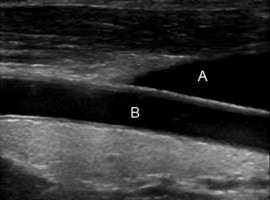Carotid Ultrasound
Ultrasound imaging is a noninvasive medical test that helps physicians diagnose and treat medical conditions.
An ultrasound of the body's two carotid arteries, which are located on each side of the neck and carry blood from the heart to the brain, provides detailed pictures of these blood vessels and information about the blood flowing through them.
A Doppler ultrasound study is usually an integral part of a carotid ultrasound examination.
Doppler ultrasound is a special ultrasound technique that evaluates blood flow through a blood vessel, including the body's major arteries and veins in the abdomen, arms, legs and neck.
What are some common uses of the procedure?
The carotid ultrasound is most frequently performed to detect narrowing, or stenosis, of the carotid artery, a condition that substantially increases the risk of stroke.
The major goal of carotid ultrasound is to screen patients for blockage or narrowing of their carotid arteries, which if present may increase their risk of having a stroke. If a significant narrowing is detected, a comprehensive treatment may be initiated.
It may also be performed if a patient has high blood pressure or a carotid bruit (pronounced brU-E)—an abnormal sound in the neck that is heard with the stethoscope. In some cases, it is also performed in preparation for a coronary artery bypass. Other risk factors calling for a carotid ultrasound are:
- diabetes
- elevated blood cholesterol
- a family history of stroke or heart disease
A carotid ultrasound is also performed to:
- locate a hematoma, a collection of clotted blood that may slow and eventually stop blood flow.
- check the state of the carotid artery after surgery to restore normal blood flow.
- verify the position of a metal stent placed to maintain carotid blood flow.
Doppler ultrasound images can help the physician to see and evaluate:
- blockages to blood flow (such as clots).
- narrowing of vessels.
- tumors and congenital vascular malformation.



